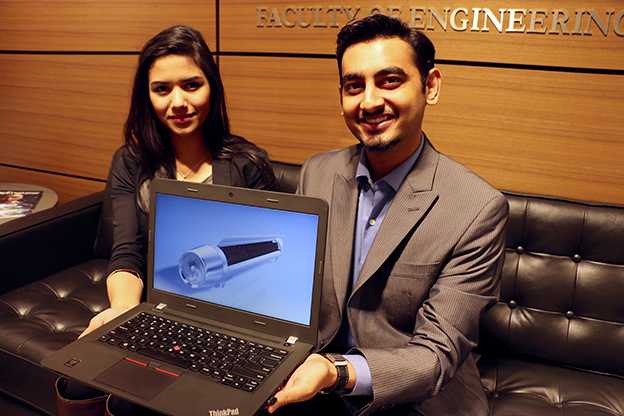Engineering students take plans for Jetsons-style travel tube to SpaceX competition

A team of McMaster engineering students will be presenting their design for a futuristic high-speed transportation system dubbed Hyperloop in Texas this weekend.
The brainchild of billionaire tech entrepreneur Elon Musk, the group of 10 engineering students and one Bachelor of Technology student will offer their take on the conceptual high-speed transit system designed to send passengers careening through a vacuum-sealed tube in pods at a supersonic speeds.
Musk released his preliminary concept publicly in 2013, and in June 2015 his aerospace company SpaceX put out the call to university students and independent engineering teams to design and build their best Hyperloop pod. More than 700 teams entered the contest. Of those, only 120 teams, including McMaster, were selected to participate in the SpaceX Hyperloop Pod Competition’s Design Competition at Texas A&M University on January 29-30.
“This is considered the fifth mode of transportation,” said team co-captain Vishal Kharker, a fourth year computer engineering student. “You’ve got your car, bus, train, plane and your bike. This is like a Maglev (Japanese bullet train) in space but on Earth.”
As part of the challenge, teams were required to think about everything from shape and function to brakes and materials. Winners of the design competition in Texas will advance to the testing stage this summer. SpaceX announced this week that they will be building a test track adjacent to its Hawthorne, California, headquarters.
“We do expect a tough competition because it’s a global competition,” said Kharker, whose team is comprised of students from several departments including materials, mechanical, mechatronics and electrical and computer engineering. “But we feel fairly confident with our design. Our biggest selling point is a) our design is feasible and b) you can implement it right away.”
The team hopes its unique 112-page design called ‘Nimbus’ — including a pod that looks like a rocket flipped on its belly moving tail first — and other features set them apart from the sea of competitors.
“We’re definitely going to see a Hyperloop happen,” said team co-captains Sree Sushmita, a fourth-year Electrical & Biomedical student who spearheaded the project at McMaster. “In less than five years, we’re going to be travelling in this thing and it’s going to become the norm part of culture. It’s exciting.”
The McMaster team is hoping to get sponsors in Texas to be able to develop their idea further.

